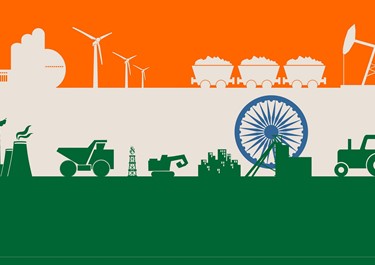
The Indian O&G industry is usually proficient at disaster response and its effectiveness has been demonstrated across a range of disaster scenarios in the past. With COVID-19 too, the industry has done reasonably well thus far, as evinced by the near continuous operations and availability of different fuels, almost across the entire country. However, most O&G CXOs believe that the recovery for the sector is likely to be longer, and more protracted than anticipated.
The recovery for the Indian economy lies between a couple of equally plausible but alternate futures – a ‘protracted’ recovery (what is popularly known as ‘U’ shaped recovery) or recovery in ‘Fits and Starts’ – speedy improvement to start with, but with a future dip(s) due to a second/third wave of the viral infections (a ‘W’ shaped recovery). While the jury is still out on the exact recovery path that the Indian economy will take, the real need of the hour for the O&G industry is to rise beyond the specifics of COVID-19 response and focus instead on what industry constituents could do to emerge stronger and ‘thrive’ in the brave new world.
Managements should therefore prioritise their thinking onto the medium-to-long term opportunities. This requires the industry to fast-forward building intrinsic organisational capabilities along three inter-connected dimensions.
First, develop an agile operations mindset: Most Indian O&G companies build in-depth operational plans based on a deterministic view of the future. Over the years, companies have set up strong organisational value chains (assets, supply chains, customer touch-points, etc.) needed to operate in different parts of the country. It is interesting to note that while companies have built elaborate operating processes to sense and react to safety incidents, they haven’t necessarily done the same for other business events. The O&G industry is increasingly facing disruption on multiple fronts: more nimble substitutes/alternatives, changing consumer preferences, and rapidly changing geo-politics. Companies need to encourage sensing and divergent thinking behaviour, ground-up, thus enabling them to look around corners, keep scanning the external environment, realise implications well in advance, and then take necessary actions. Companies that are able to design flexible, team-based organisational processes that help seamlessly blend these insights into operations planning and execution, more often than others, are likely to be the winners in the long-term.
Second, take the long view: Globally and in India, the O&G industry is one of the early adopters of scenario planning. However, Indian O&G companies haven’t always followed-through in making the sizable bets to back alternate scenarios (with the option of scaling-up), in addition to doing everything to accelerate the emergence of the future scenario of choice. Often, managements tend to view these bets only from a narrow lens of project economics, which prevents a go-ahead on any alternative investments other than the pet management case, which in turn negates the benefits of scenario planning in most cases.
Third, build partner ecosystems: Indian O&G companies have traditionally been good at working with suppliers/vendors, through multi-year, arms-length relationships. However, lots of other industries use a mix of financial investments and other forms of alliances to create value from complementary, but long-term relationships. Such alliances enable companies to get into positions early and thus enable them to seize opportunities or weather storms like COVID-19 better. The Indian O&G industry too should evaluate such alliances, which may require challenging some of the industry conventions, and may spawn collaborations with partners beyond industry battery limits in areas like advanced analytics and behavioural sciences, logistics, mobile/online payments, technology, etc., who could in-turn help incumbents create a tailored offensive/defensive strategy.
COVID-19 has definitely made the O&G industry in India sit-up and review what should go into business continuity plans. However, leaders who seize this opportunity to equally start thinking of pervasive changes that are needed for their operating models, using a combination of an agile operations mindset, long-term view, and partner ecosystems, faster than others, are likely to emerge stronger as the dust settles.